Where’s the Beef At Gozu? It’s In Practically Everything
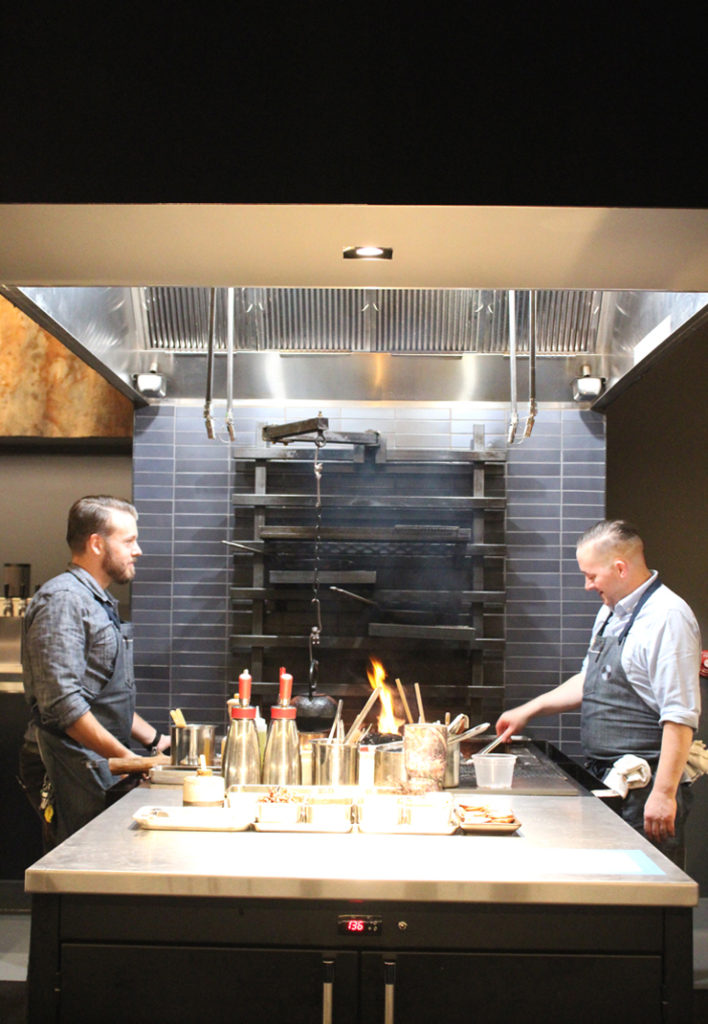
Much like you wouldn’t expect to a half chicken set before you at a yakitori restaurant, don’t come to the new Gozu in San Francisco craving a brontosaurus-sized steak.
Nope, you won’t find that here.
Unlike so many Wagyu-focused restaurants of late in the Bay Area, this one doesn’t focus solely on the primo primal cuts. Instead, Chef-Owner Marc Zimmerman employs a nose-to-tail philosophy here, making use of far more parts of the Japanese specialty-breed, heavily marbled cow than a typical steakhouse ever would.
You’ll find him burning the bones as charcoal, rendering the fat to make sauces and to preserve vegetables, and using lean cuts to even make a house-made version of shoyu.
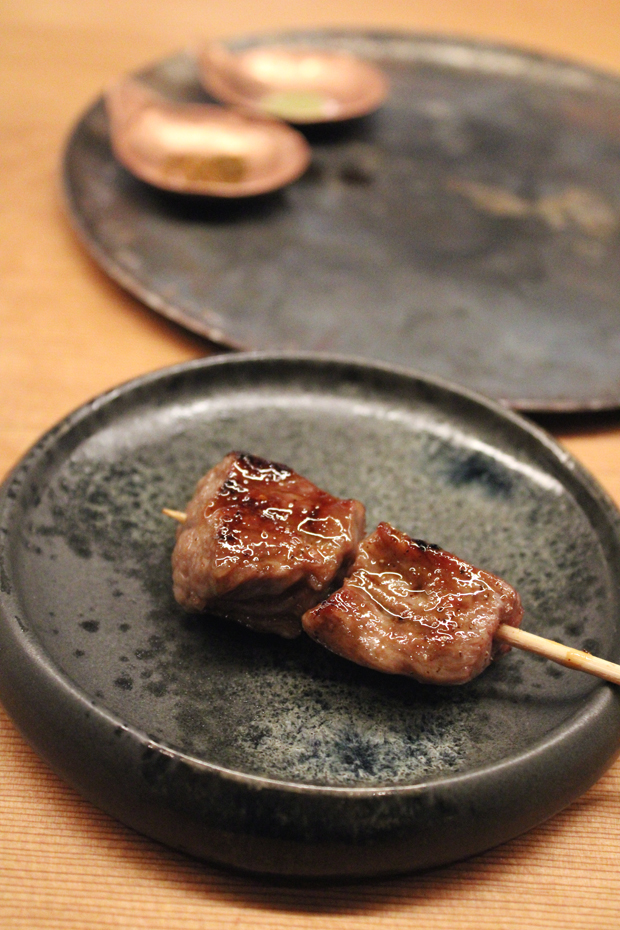
Zimmerman got the idea for this unique restaurant about five years ago when he was the chef at Alexander’s Steakhouse in San Francisco. He would regularly travel to Japan to source Wagyu from farmers there. But back then, he was only buying the loins, which prompted the farmers to question when he would buy the entire animal. After all, a farmer can’t make a living by only selling part of a cow. The only way to maintain a sustainable business is to make use of every bit of what you’re raising.
It got Zimmerman thinking, and agreeing that it only made sense to buy the entire animal.
That’s what Gozu is all about. Zimmerman sources whole animals from Japan, purchasing everything except the offal and any cut near the spinal column, of which Japanese regulations prohibit exporting.
Zimmerman partnered with Ben Jorgensen, tech veteran and CEO/Co-Founder of Constellation Labs, whose first foray into restaurant financing was with the Michelin three-starred SingleThread Farms & Restaurant in Healdsburg.
I had a chance to preview the restaurant when I was invited in as a guest the day before it opened last week. Designed by ALM Project, which also created the look of Michelin three-starred Benu, In Situ, and Monsieur Benjamin, all in San Francisco, Gozu is a visual tour de force. It is like a black box theater with a kitchen as its stage. It is somehow both traditional and very modern in feel.
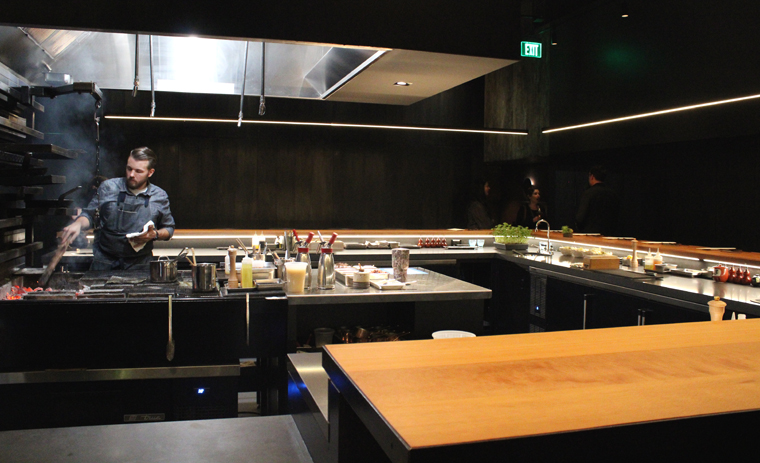
Walk inside and be enveloped in tones of charcoal and black, giving the space a cloistered feel. Large panel murals hang high above the dining room. Created by artist Elkpen, they resemble watery wood grain, lending a warmth to the space that’s otherwise quite stark.
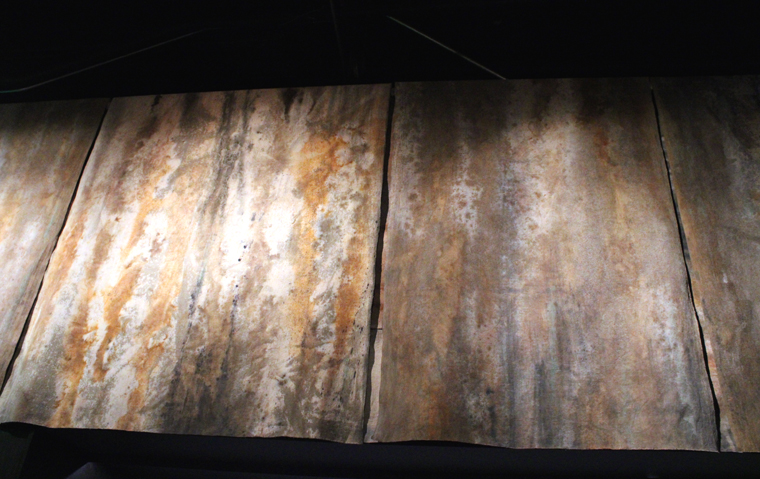
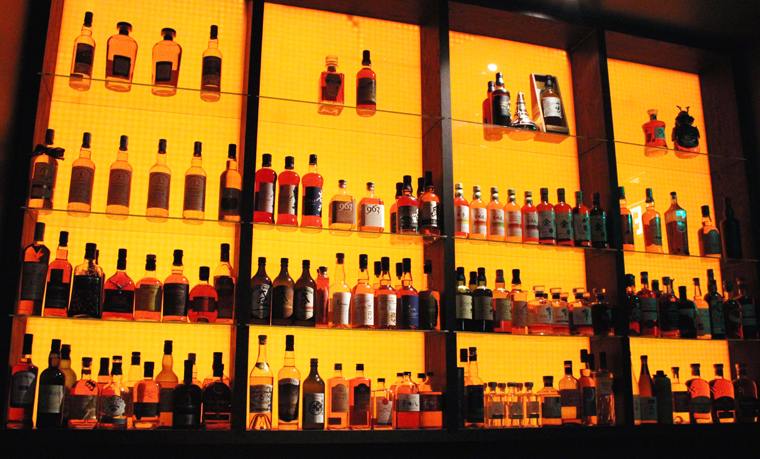
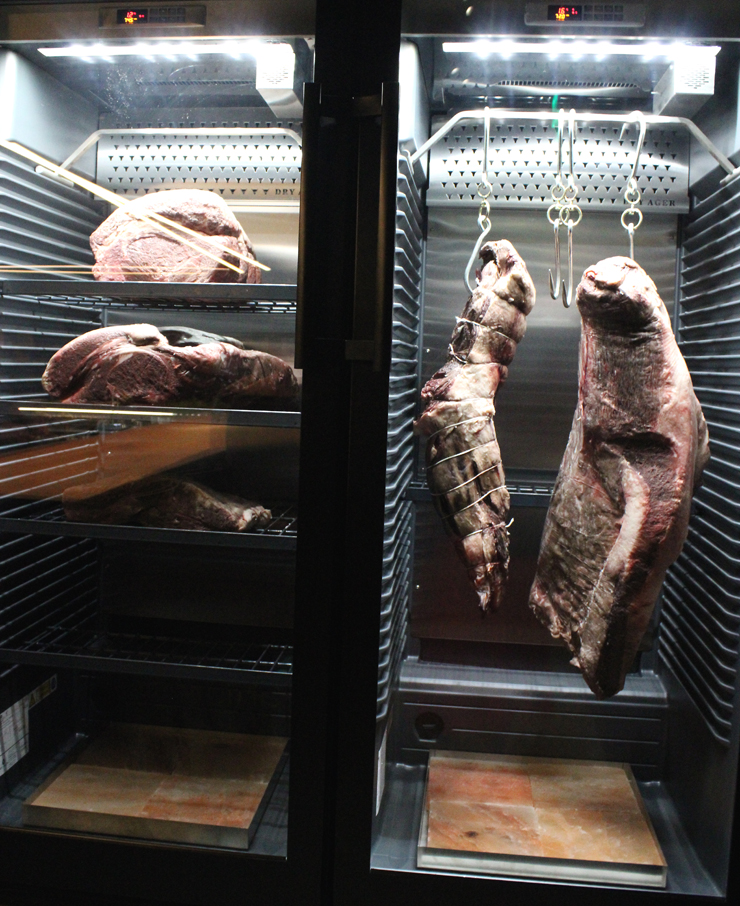
There’s a separate whiskey lounge, aglow with back-lighted bottles on shelves, which doubles as a private dining room. There, you’ll find 40 different whiskies, some quite rare.
The restaurant seats only 31, with 25 of them centered around the dramatic U-shaped kitchen hearth, where the chefs serve diners directly, just like at a sushi bar.
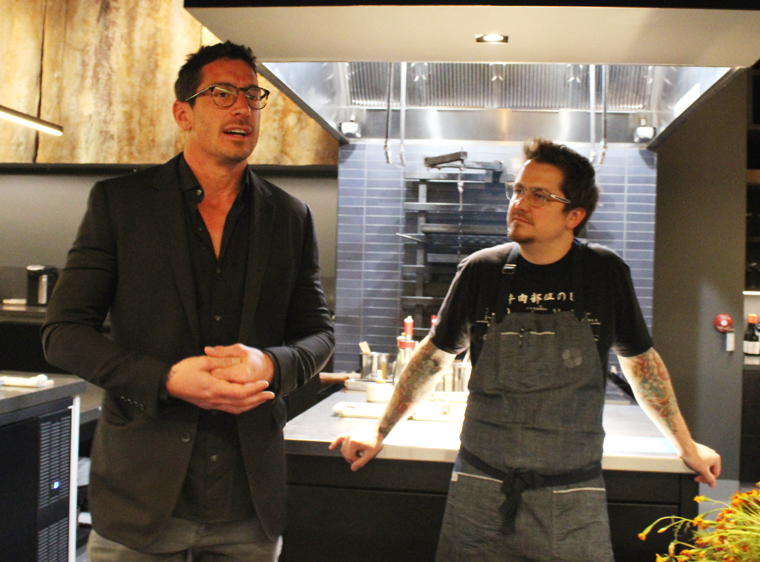
A meal at Gozu is not cheap, but it is less pricey than you might fear. Again, that’s because no giant rib-eyes are on the menu here. Instead, there are a la carte selections available, as well as a tasting menu tops out at $150 per person.
“People are starting to pay more attention to what they put in their body. I drive past a billboard that says two cheeseburgers for $5. That doesn’t make me want to stop there,” Zimmerman says. “High-quality beef shouldn’t be inexpensive.”
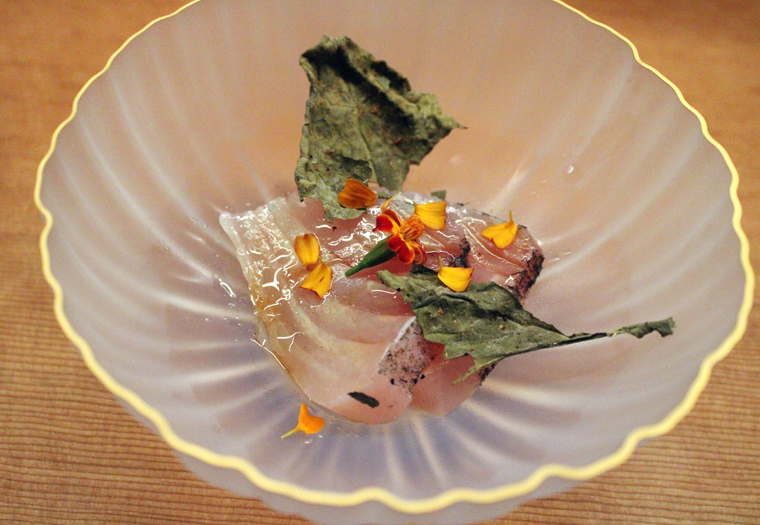
And beef is not the only thing served. The albacore tataki ($14) is a marvel, kissed by the heat of the charcoal to impart a lovely smokiness, then dressed with a Wagyu garum, sort of like Vietnamese fish sauce, but made with Wagyu, whiskey, vinegar and koji, and fermented for six months. Fried kale — that’s been lacto-fermented for 3 days before being fried — and marigold blossoms decorate the top.
It’s a fish dish that revels in umami. It’s served in handmade Japanese glass bowls rimmed in gold, so delicate that Zimmerman sheepishly admits nearly a third of them had already been broken before the restaurant even opened.
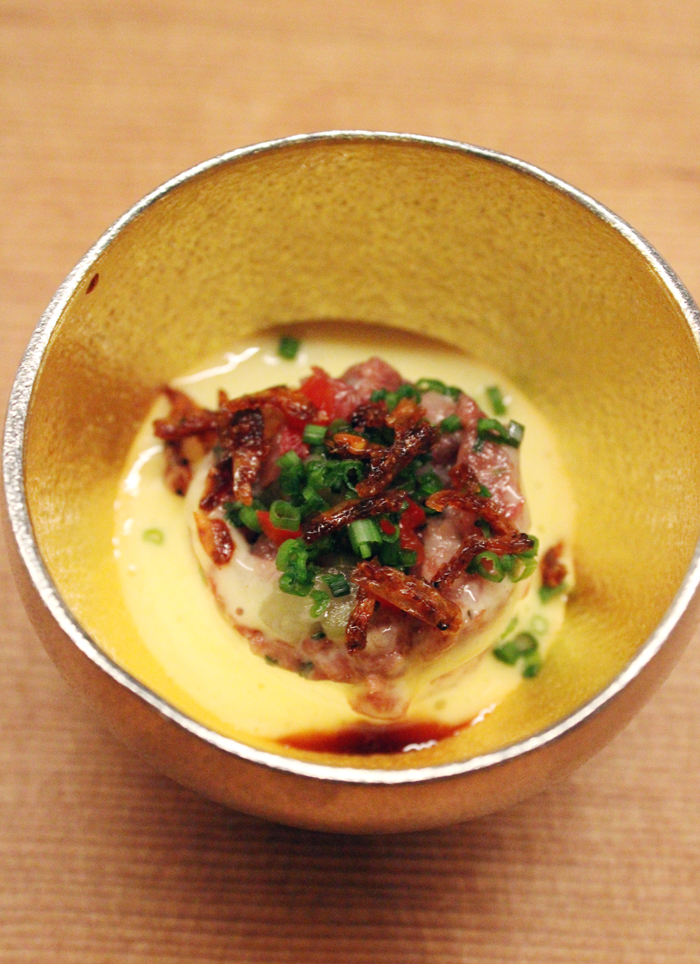
Raw Wagyu shoulder is finely hand-chopped for tartare ($12) mixed with roasted oil, crisp dried shrimp and pickled cucumber. There’s a rich, eggy almost hollandaise-like sauce at the bottom of the dish. As one of the cooks who set it before me said: It’s eats very much like a burger. It has that kind of forward beefiness with the sauce almost acting like the Thousand Island that gets dolloped on a bun.
Chawanmushi ($16) is one of the best renditions around. It’s made with duck eggs from a Hollister farm, which gives the quivering steamed custard a silky and fluffy texture. Dashi mixed with beef consomme flavors it fervently. Smoked trout roe and matsutake shoyu add another level of smoky umami.
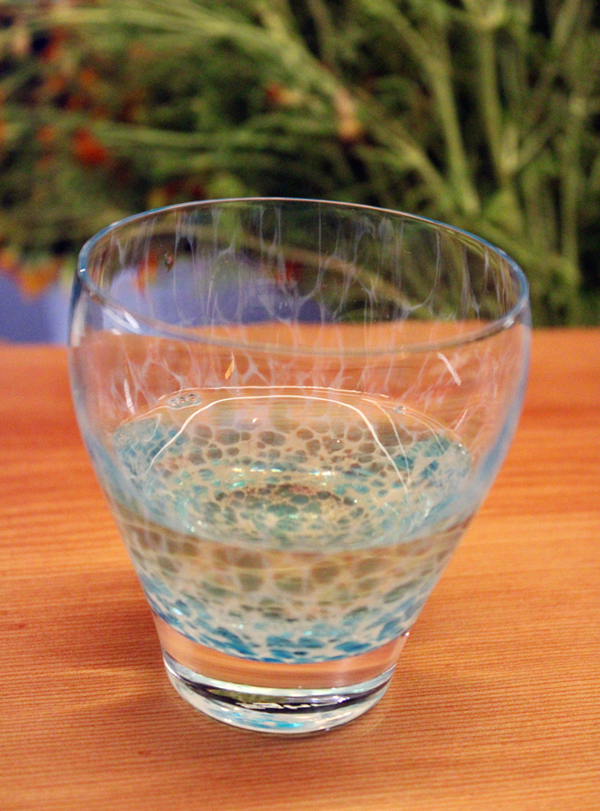
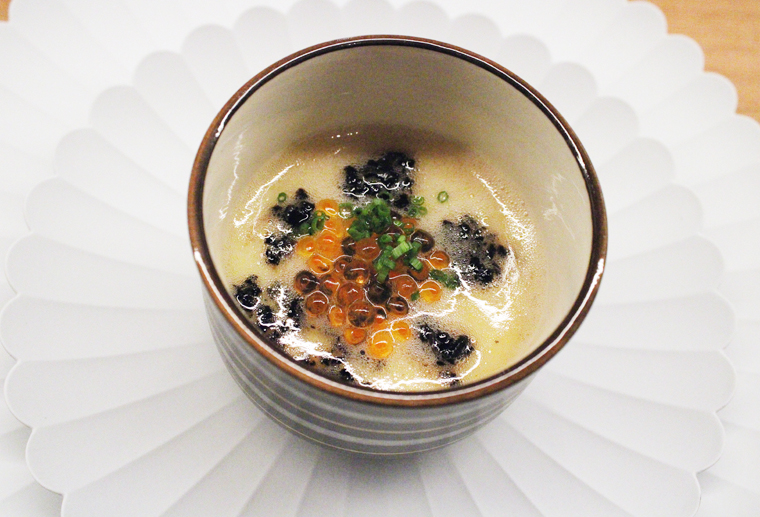
Skewers ($22) are where you really get schooled on the fine points of Hokkaido A5 Wagyu Snow Beef, raised in the northernmost part of Japan where the climate is frigid. This is where you can really tell the difference between the parts of the cow, just as you can with chicken when you eat skewers of the oyster versus the cartilage at a yakitori restaurant.
Served with house-made Japanese 7-spice known as shichimi, and sansyo makrut leaf-scented pepper, the skewer of shoulder squirted fatty juices from the first bite. It’s a chewier cut, especially compared to the skewer of flat-iron that followed. Located further in the shoulder, it was more tender and gushed even more with fatty juices.

A kefta-like meatball skewer will wish you could have about half a dozen of them atop pasta. It’s one of the moistest, juiciest, richest tasting meatballs you’ll ever experience.
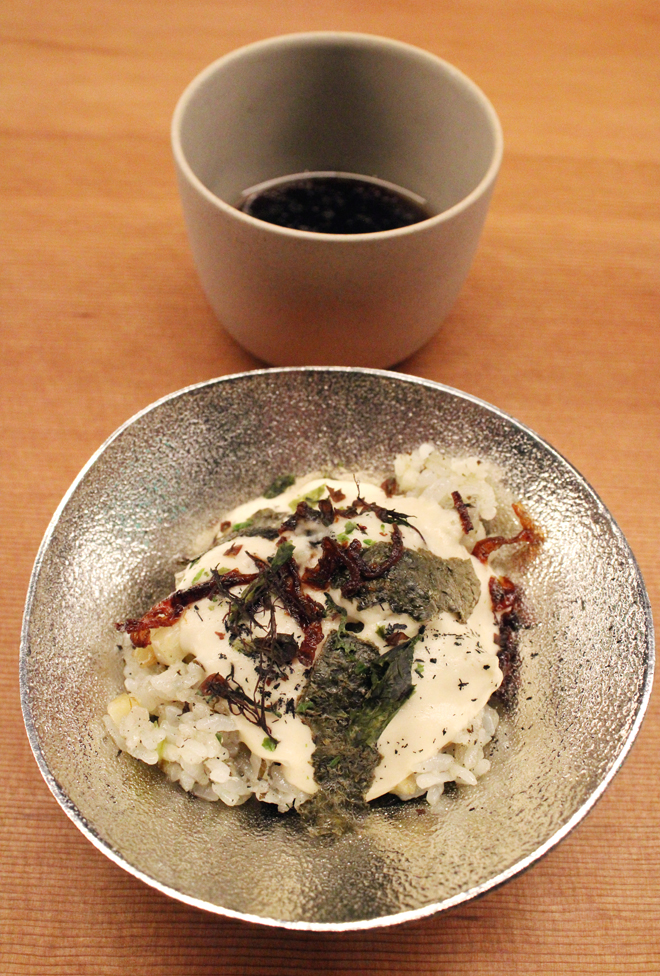
Kohishikari rice ($16) gets gilded with celery root, fermented garlic cream, and seaweed. Mix the moist, springy grains with the creamy sauce, and spoon it up. Best yet is the cup of Wagyu “tea” that comes alongside. It reminded me so much of Sunday suppers, when my Dad would cook a roast beef, then pour the juices that had accumulated as it rested after cooking into a cup to enjoy as his own little treat.

For dessert, there’s a dainty pumpkin mochi cake ($9) with ginger scented sweet cream. Because I’m a ginger fanatic, I wished for just a tad more ginger bite. Sticky and chewy, the cake itself had tiny pieces of sweet pumpkin inside.
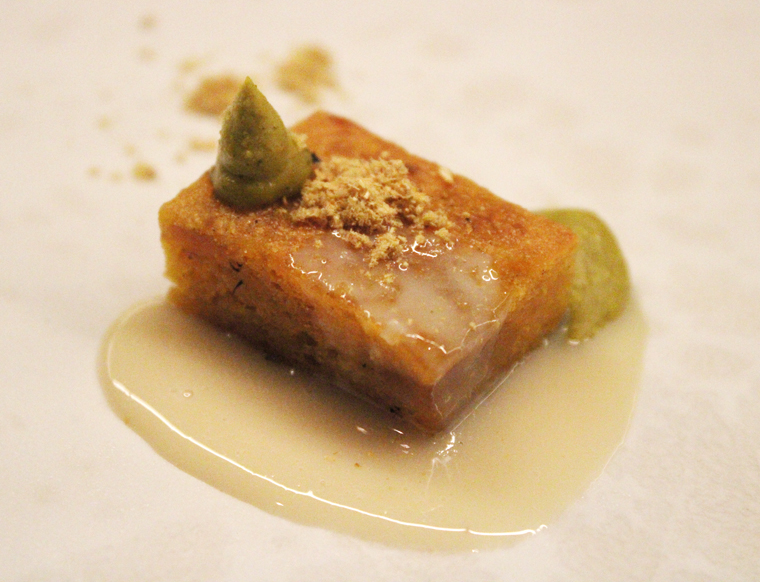
The restaurant’s dramatic design extends to its restrooms, which are also done up in bold black. Yes, even the hand-soap is that deep, dark, mysterious hue.
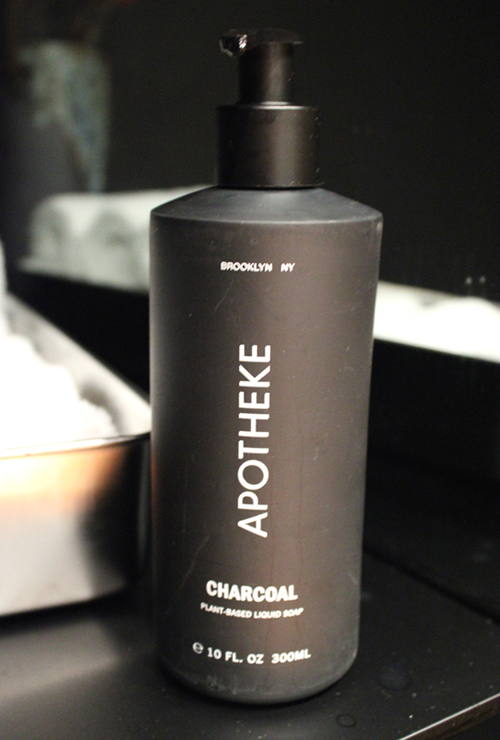
Leave it to Gozu to be somehow both understated and simultaneously bold in all that it does.
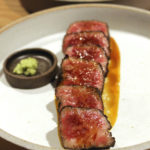
More Wagyu to Enjoy: A Visit to Niku Steakhouse in San Francisco
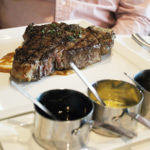

Thank you so much for coming into the restaurant Carolyn! It was a treat to have you in and read about your experience!
We look forward to showing you around again!
Ben: Best of luck on the new restaurant. It’s an exciting new addition to San Francisco’s dining scene.